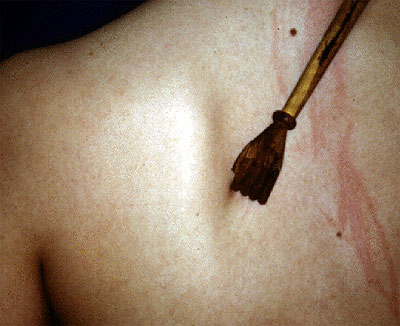|
|
|
Pruritus
Pruritus, often accompanied by excoriations, can be a non-specific marker of internal malignant disease.
Although often associated with xerosis, the pruritus of malignant disease can occur in apparently normal skin. It can be continuous or paroxysmal. It is usually generalized.
When occurring with malignant disease, pruritus is most commonly associated with leukemia and lymphoma.
Pruritus associated with bathing is a marker for polycythemia rubra vera.
Pruritus associated with visceral neoplasia is most commonly associated with pancreatic and stomach tumors.
The appearance of severe pruritus after treatment of the primary tumor may herald a tumor recurrence.
Renal and liver involvement with primary or metastatic cancer can also produce pruritus secondary to the accumulation in the skin of pruritogenic metabolites.
Treatment:
- Treatment of the primary cancer is usually necessary to control the pruritus.
- Heat will usually increase pruritus.
- Correct any underlying xerosis by the daily use of skin lubricants.
- Opiates must be avoided, as they increase itch.
- Calamine lotion can dry the skin, increasing itch.
- Avoid irritants such as soap.
- A combination of H1 and H2 antihistamines can be helpful in some patients.

Back to Dermatology Glossary - P Index |
Back to Dermatology Glossary Index
|